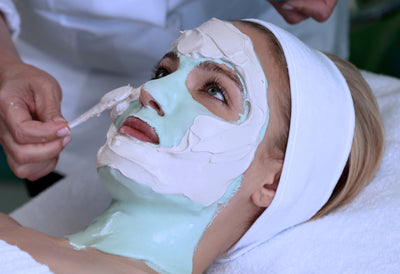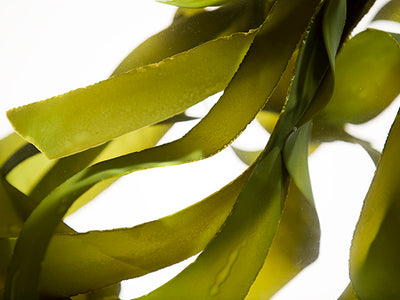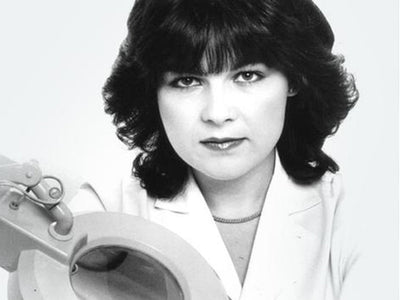Chemical Peels: Your Top Questions Answered

Sounds amazing, right? It’s not all so rosy though. These peels are so good at what they do, if not handled properly, they could resurface more than you wanted, leaving skin in a very vulnerable state.
This can mean raw, thinner, more sensitive skin that will be more difficult to manage. That’s why before you enter the world of chemical peels, you need to get the full picture. A little research goes a long way, so keep reading and get the top chemical peel questions answered before you peel.
I hear certain peels are safe and others are way too extreme, what's the difference?
You heard correct! Peels are roughly divided into superficial peels (AHA & BHA), medium peels (TCA and Jessner) and deep peels (Phenol peels). You can read about the types of chemical peels, but basically you’ll want to look for Alpha Hydroxy Acids (AHA’s) and Beta Hydroxy Acids (BHA’s), and only seek TCA, Jessner and Phenol peels with professional advice in very serious cases.
AHA’s and BHA’s are gentle and eat away dead skin cells by dissolving intercellular bonds between keratin in the stratum corneum, or outer horny layer of skin. You may feel a slight sensation while it’s working, and this is entirely normal and shouldn’t be painful.
On the other side, TCA peels may require a physician present and Jessner and Phenol peels must be performed in a medical setting, by doctor recommendation, in strict conditions, and Phenol peels require anesthesia!
While most of us want the most potent thing for maximum results, we don’t think you want to be hermit inside your house for weeks on end, due to redness and sensitivity, all because you thought your skin looked a bit dull.
Can I get a harsh peel just once to correct a big problem, then switch to milder peels?
Generally, when it comes to deep peels like Phenol peels, it’s one and done. Phenol peels are an intense procedure that requires a long recovery time and is usually reserved for people with severe acne scarring, including deep pock marks and other severe scars.
With these procedures, superficial or mild peels may not be allowed thereafter. For medium and superficial peels, the strength and % of acidity will determine how frequent you can receive treatments. Generally, the stronger the peel the longer the healing time is required.
More intense peels should only be considered for severe cases, and only after much research has been done on not only the procedure but where you get it done.
The safest alternative to getting such harsh peels is receiving multiple sessions of superficial peels. You can get them in significant strengths like 30% acidity levels when visiting a professional, or find them in 8-10% levels for home use. This minimizes the risk of overdoing it, and you may find you’re satisfied with fewer peel sessions than you originally thought.
If glycolic peels are safe, I can get them without worry, right?
While we say peels like 30% glycolic are safe, we mean safe in the hands of a skin care professional. In general, chemical peels that contain more than 10% total acid and have a pH below 3.5, should always be done under the guidance of a skin care professional.
Professionals have access to the latest glycolic peel innovations, such as a new skin care trend: a cream-based glycolic peel mask. This hybrid treatment can offer the best of masking combined with the best in safe, effective peels for a revolutionary multi-function treatment that deep cleanses, hydrates and brightens the skin’s appearance.
And even though superficial peels can be derived from ingredients like fruit, and while fruit acid seems gentle, if left on long enough and in high enough concentrates, they can be caustic. This is what is meant by gentle, yet effective. A trained skin care professional knows the amount and duration necessary for your skin.
I don't have time/can't afford to see a professional right now. Are there really no peels I can use at home?
Actually, our CEO & Founder, Lydia Sarfati thought of this problem many years ago, and came up with a fool-proof, premeasured system designed to safely bring the magic of peels to anyone in the comfort of their own home! In comes Rapidex Marine Exfoliator, a unidose 8% multi-acid peel perfect for all skin types.
The real key is in the unidose system: measured amounts of the best, safest peels in the world in a single application. Including cap ingredients now lactic, glycolic, malic acids and more, this 14-swab set is a two week program that is safe enough for daily use.
Are there any reasons I shouldn’t get a peel?
Actually, yes there are! There are several preconditions that may preclude this type of treatment. For example, it is advised to avoid chemical peels if you are experiencing any kind of skin infection, open wound, severely damaged skin, sun damaged skin, inflammatory dermatoses (dermatitis, psoriasis, etc.) and skin cancer (or any other kind of cancer during and after treatment, until okayed by your doctor).
You don’t want to chance it with serious issues like these. Also, pregnant or nursing women will want to avoid glycolic peels, as skin sensitivity is increased, and should always consult a doctor prior to treatment.
There really is a peel for everyone, but our best advice, whether opting for a medical procedure or a good at-home program, is to always seek out professional advice before hand.









